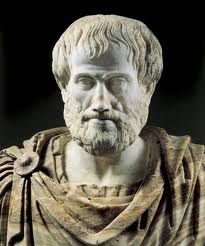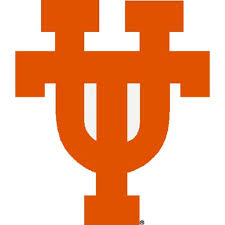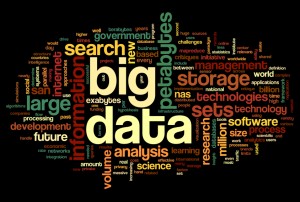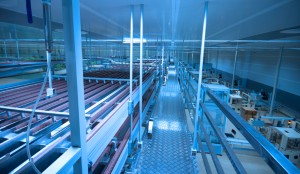Aristotle and Economics

He’s back!
The Nobel economist, Robert Shiller, has an interesting assessment of economics in yesterday’s New York Times. Shiller is one of three economists to win the prize this year and they all have different opinions on rationality and economics.
Prizewinner number one, Eugene Fama, is a rationalist. Rational people making rational economic decisions can explain all of economics. You have to look closely, but it’s all rational. Prizewinner number two, Lars Peter Hansen, occupies a middle position, emphasizing mathematical models but also noting the importance of “animal spirits, … rare events, and overconfidence….”
Shiller (aka prizewinner number three) notes that he is “the most willing … to incorporate ideas about nonrational or irrational behavior from other social sciences….” I’ve written a bit about nonrational economic behaviors – like loss avoidance bias. Additionally, I know that I don’t always make decisions solely for the purpose of maximizing my income. In other words, they’re nonrational in the strictest sense of economic rationality. So, I’m probably in Shiller’s camp.
Ultimately, however, I think the debate goes all the way back to Aristotle who made a clear distinction between:
- Things that can never be other than they are, and:
- Things that can be other than they are.
Physics is in Category One. The speed of light won’t change, no matter how much we discuss it. Thus, Aristotle proposes that analytics are the appropriate tools to study physics – and any other topic that falls in Category One. We analyze to understand, not to change things. By understanding, we may improve our ability to adapt to the world, but we’re not changing the world. (On related topic, I worry that physics envy is leading economists astray. The economists are being nonrational).
On the other hand, Aristotle would put political science in Category Two. The way we govern ourselves can be changed and improved. We need to analyze but we also need to come to a consensus. Aristotle codified rhetoric for this purpose. Rhetoric is the art and science of persuasion with the goal of reaching consensus on how we can improve the world around us. Rhetoric is not simply the art of winning an argument (that’s sophistry). Rhetoric helps us think clearly, reason together, and change what can be changed to build a better world.
I’ve been wondering recently whether economics fits into Category One or Two. If it’s Category One, all we can do is analyze it. We can describe economics but we can’t change it to build a better world – except in the sense that we can understand the world better. If economics is in Category Two, however, we could conceivably identify better ways to organize our economies and improve the world around us.
If economics is totally rational, then it seems to fit into Category One. We can only describe it. There’s no changing it (unless we can change human rationality, which seems improbable).
On the other hand, if economics has nonrational elements, then we could conceivably improve it. We could identify mechanisms that would help us balance rational and nonrational behaviors. As Shiller notes, he still advocates “a free market system, with innovations to make it work better.” I’m an optimist, so I’m hoping that economics fit naturally into Category Two. That’s why I’m lined up with Shiller (and Kahneman and others).
Aristotle has given us an interesting system to organize our thoughts. So what do you think? Does economics fit in Category One or Category Two?
Stemming the STEM Tide

Can we make science fun?
I sometimes get a bit depressed when reading about scholastic achievement in America. For instance, in the 2012 edition of the PISA tests (Program for International Student Achievement) American teenagers ranked as average or below average in math, science, and reading. (The test measures achievement for 15-year-olds).
The Organization of Economic Cooperation and Development (OECD), a group of 34 mostly first-world countries, administers PISA every three years. In addition to the member states, other countries can also request to take the tests. In 2012, 65 countries participated. Compared to the 65 countries, the USA ranked
- 30th in math;
- 23rd in science, and;
- 20th in reading.
Since OECD first administered the tests in 2000, American performance has not changed much. Our relative position, however, has fallen as other countries have passed us by. Arne Duncan, our Secretary of Education, says that the results “must serve as a wake-up call” for the nation. (Here’s a good infographic on the results. Here’s an in-depth report from OECD.)
But is it really a crisis? Sure, it would be great to be number one in everything, but if we had to choose, would it be better to be first in teen achievement or in national achievement? According to the Bloomberg Innovation Quotient, for instance, America is the most innovative country in the world. The Global Innovation Index is a little less sanguine, but still ranks the USA as the fifth most innovative nation in the world.
It appears, then, that poor adolescent performance doesn’t lead directly to poorer national performance. Though our 15-year-olds are average (at best) perhaps our 21-year-olds are not. Perhaps our colleges and universities are picking up the slack. Perhaps innovation stems from creativity more than mastery of science, math, and reading. Perhaps our national diversity creates opportunities that are not found in more homogeneous countries. Perhaps … well, there are so many variables that it’s hard to sort them out.
In a related field, we’ve seen a lot of handwringing about STEM in America. STEM includes all disciplines in Science, Technology, Engineering, and Math. Over the past several decades, critics have suggested that we’re recruiting too few students into STEM fields and that too many are dropping out. As with the PISA scores, analysts suggest that a crisis is brewing and must be fixed or we’ll inexorably decline as a nation.
Really? A recent article in Science magazine points out that “…new data poke major holes in the conventional wisdom.” For instance, conventional wisdom holds that the attrition rate for STEM students is very high. Indeed, as many as 50% of STEM students drop out or switch to non-STEM majors. That does sound high but nobody had researched the attrition rate in other disciplines. When researchers actually looked at other fields, they found the attrition rate in the humanities was 56% and in business was 50%. In other words, students really aren’t very good at deciding what to major in when they first arrive at university.
Conventional wisdom also holds that very few students transfer to STEM majors. STEM is characterized by “low inflow and high outflow”. But a study from Indiana University suggests otherwise. Of students who entered college expecting to major in a STEM field, 24% changed to a non-STEM field by the end of their first year. That sounds like a lot but the study also found that 27% of students who entered college in a non-STEM field had transferred to a STEM curriculum in their first year. As the Science article concludes, it’s a two-way street.
What does all this mean? I think it’s time to put on our critical thinking caps, step back, take a deep breath, and define the problem more clearly. I’m not arguing that there’s no problem. But I do believe that we’ve defined the problem incorrectly.
University of Travis

Go UT!
When I’ve written about best-of-breed education in the past (here, here, and here), I’ve mainly stressed the benefits to students. Students can acquire competencies in many different ways, have them tested and verified, and get on with life. They will have more choices, more flexibility, and a better education at lower cost.
That’s all well and good … but what about teachers? Would best-of-breed (BOB) education be better for us?
More specifically, could I start my own university?
I enjoy teaching and I especially enjoy teaching at the University of Denver (DU). But teaching at any university imposes some constraints. For instance, DU is on a quarter system so I can only start new classes four times a year. If I had my own university, I might start a new class every Monday on the Internet. Students would have a lot more choices of when and how to get an education.
I could probably lower the cost of education as well. While DU is competitive on cost, it’s not cheap. I could offer my courses for $100 per student – very competitive – and make it up on volume. I would probably make more money than I’m making now and, at the same time, students could reduce their costs dramatically. They’d also get some darn good classes (if I do say so myself). Quality and flexibility go up while costs go down.
Setting up my own university is not as far-fetched as it might sound. It all has to do with how Learning Management Systems (LMS) have evolved. LMSs typically run on the Internet and help teachers manage all aspects of the education process – from lectures to grading to student communication. They can even help you identify plagiarism.
Traditionally, choosing an LMS was an institution-wide decision. A school (or a department within a school) would choose an LMS and all the teachers and students in the school would use it. For instance, I teach in University College (UCOL), the professional and continuing education unit within the University of Denver. Some years ago, UCOL standardized on an LMS called Pearson eCollege. Every course we teach now uses eCollege. (By the way, it’s quite good and I recommend it).
As LMSs have evolved over the past decade, they’ve become very rich platforms for serving up myriad educational experiences. The decision-making has also changed. It used to be an institutional decision. Now it’s a personal decision. Many LMS platforms are now free (or close to it) and they’re fairly easy to maintain. So I could acquire an LMS, set it up on this website, and start teaching. I could probably have it up and running in less than a month.
While students could learn a lot at the University of Travis (UT), they might find it difficult to prove that they had learned a lot. I would, of course, provide verifiable test scores and certificates. But that’s probably not enough. We would still need some type of universal testing system and “student passport” to verify what the students have learned and retained. As I’ve argued in the past, it’s not conceptually different from evaluating fine wines.
Andy Warhol once said that, in the future, everyone would be famous for 15 minutes. I have a slightly different take. In the future, everyone will be a teacher for 15 minutes. Barriers to entry are collapsing. While some people will teach full time, most people will teach from time to time. Opportunities to learn will expand dramatically and costs will drop.
Just one remaining question: what mascot should we choose for the University of Travis?
Is Big Data The Death Of Strategy?

More efficient. Not more competitive.
Why is milk always at the back of the grocery store? Because of the precursor of Big Data. Let’s call it Little Data.
Retailers have always studied their customers’ behavior. An astute observer is just as valuable as mountains of data. In the era of Little Data, grocers noticed that shoppers usually waited until they needed several items before going to the store. Milk was different, however. If a household were out of milk, a family member would go to the store for the express purpose of buying milk – and only milk.
Once grocers noticed this, they moved the milk to the back of the store. Shoppers who came in only for milk might notice several other things they needed (or wanted) on the trip through the store. Rather than buying one item, they might buy half a dozen. By relocating the milk, the grocer could sell more.
What happened next is instructive. Once one grocer figured out the pattern and moved the milk to the back, all other grocers followed suit. I’ve verified this in at least a dozen countries. The milk is always at the back. No grocer can establish a competitive advantage by putting the milk at the back of the store.
What does this have to do with strategy? I’ve always subscribed to Michael Porter’s insights on the difference between operational effectiveness and strategy. In his classic article, What Is Strategy?, Porter defines operational effectiveness as doing the same things as competitors but doing them better. Strategy, on the other hand, means, “… preserving what is distinctive about a company. It means performing different activities from rivals or performing similar activities in different ways.”
In the era of Little Data, we could figure out simple things like how consumers buy milk. Now, in the era of Big Data, we can identify much more subtle patterns in much greater detail. However, the underlying dynamic doesn’t change. Once one company figures out a new pattern, every one of its competitors can also implement it. As Porter points out, “…the problem with operational effectiveness is that best practices are easily emulated. … competition produces absolute improvement in operational effectiveness, but relative improvement for no one.”
Big Data, then, is about operational effectiveness, not strategy. Yet when I read about Big Data in management journals, I sense that it’s being treated as strategic weapon. It’s not. Companies may have to invest in Big Data to keep up with the Joneses but it’s never going to be a fundamental differentiator or a strategic advantage. It’s time for Big Companies to wise up about Big Data.
Innovate Here and Produce Here

Time to make it cool again.
When my clients talk to me about innovation, it’s almost always a conversation about products rather than processes. They want to know how to create new ideas that create new products. I often remind them that they should also be talking about new processes. New processes can lead to greater efficiency, reduced costs, and – sometimes – to new products.
When my clients do talk to me about new processes, it’s almost always about customer service and satisfaction. I can’t remember the last time I had an engaging conversation about innovation in manufacturing.
It’s a shame really because we may be entering a new paradigm in manufacturing. New processes and methods may just allow the USA to re-establish itself as a leader in manufacturing. That’s the point made by William Bonvillian in a recent article in Science. I think it’s an important trend that we need to think more about – so I’d like to summarize Bonvillian’s article here.
Bonvillian identifies the differences between front-end and back-end innovation. Front-end innovation is mainly about R&D and new products. Back-end innovation focuses on manufacturing; what’s the best way to produce those products? Bonvillian argues that our national innovation investment used to be fairly balanced between the two. Today, with the possible exception of the defense industry, we focus most of our innovation investment on the front-end.
The background to this shift is a change in the way we see manufacturing – a change in the paradigm. The original paradigm was innovate-here-and-produce-here. The current paradigm is innovate-here-and-produce-there. This has largely been driven by offshore manufacturing. Bonvillian argues, however, that the current paradigm is not just driven by low wages. Offshore centers like China have also invested heavily in back-end innovation.
The next paradigm could be innovate-there-and-produce-there, which would leave the USA essentially as a services economy. Bonvillian argues, however, that we could reverse this trend and return to the original paradigm – innovate-here-and-produce-here – through initiatives in Advanced Manufacturing or AM. He points out that Germany, like the USA, has a high-cost manufacturing infrastructure yet runs “…major trade surpluses in manufactured goods, whereas the United States has run large deficits”.
So, what does Advanced Manufacturing consist of? Bonvillian outlines six different initiatives:
Network-centric production – embed IT into every stage of the manufacturing chain and use big data to raise the IQ of the entire production process.
Advanced materials – “Create a ‘materials genome’ using supercomputing to design all possible materials….” Designers could then select the most appropriate materials for any given product.
Nanomanufacturing – “Embed nano-features into products to raise efficiency and performance.”
Mass customization – use advances in 3D printing (also known as additive manufacturing) to create one-off products “at the cost of mass production”.
Distribution efficiency – the goal might be to reduce distribution costs by 10%. According to Bonvillian, that’s enough to shift decisions about onshore versus offshore manufacturing. (Could delivery by drones be part of this?)
Energy efficiency – Bonvillian argues that “U.S. manufacturing has long been overly energy-intensive.” Using energy efficient technologies “could significantly drive down production costs.”
Bonvillian develops a good list but I think one more thing is needed. Somehow we need to make it cool to participate in back-end innovation. Today, it’s cool to do financial innovation and product innovation. But I don’t see the best and brightest minds drawn to manufacturing innovation. Time to launch a branding campaign to make manufacturing cool again.